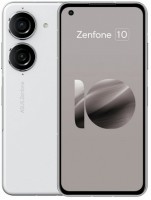Mobile Phones Asus series Zenfone (top)
Asus Zenfone (top)
The equipment of the average Zenfone smartphone includes a high-quality AMOLED or Super AMOLED display with an increased refresh rate, powerful fast charging, an advanced camera with a top-end sensor from Sony, the most up-to-date communication modules at the moment, a premium materials case and other elite goodies. At the same time, classic Zenfone smartphones cost less than many AAA-level competitors, as they do not waste resources on tempting, but expensive features that do not stand the test of time.
 |
By spring 2022, the most current model in the series is the Zenfone 8 smartphone released. On the one hand, it perfectly reveals the basic principles of this series, on the other hand, it sets new trends. In the first case, we are talking about the flagship hardware (Snapdragon 888 + 8 GB of RAM), excellent Super AMOLED display and advanced equipment (5G, Wi-Fi 6, IP68 waterproof rating, 120 Hz refresh rate, etc.). In the second, the conversation turns to the topic of changing the vector. Starting from the eighth generation, Asus began to experiment with sizes and tried to make their smartphones not as massive as it is now accepted. For example, Zenfone 8 was equipped not with a 6.7, but with a 5.9-inch screen, due to which its dimensions were significantly reduced, and the smartphone turned out to be quite suitable for one-handed control.
At the same time, the Taiwanese brand has not forgotten about phablet lovers, so after the Zenfone 8, the Zenfone 8 Flip went on sale with a more familiar 6.67-inch display and an experimental camera unit that can turn 180 degrees along the axis, turning into a front camera. Thanks to the massive body, the Zenfone 8 Flip managed to accommodate a larger battery than the regular Zenfone 8. Otherwise, they are practically twin brothers that fully correspond to Asus' vision of the perfect flagship.



